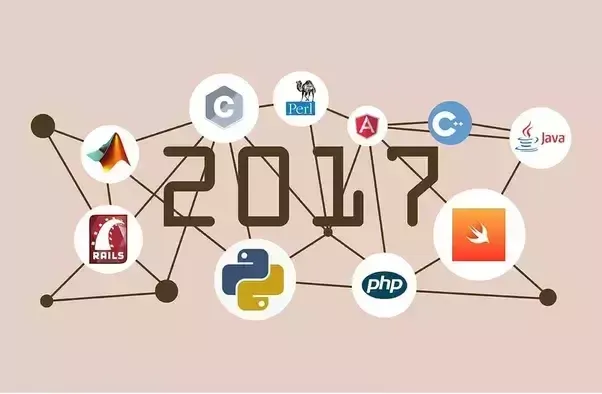
A digital network is emerging to support the upcoming digital business and its underlying technology platforms and IT practices. It focuses on people and the Internet of Things (IoT) endpoints. The digital business evolution is exploiting new digital models to align more closely to the physical and digital world for employees, partners and customers. Technology is rooted in everything. Digital technologies such as mobile, social media, smartphones, big data, predictive analytics, and cloud etc are different than the preceding IT-based technologies. Newer technologies touch the customers directly and that interaction creates a source of digital difference that matters to value and revenue.
- Artificial Intelligence and Advanced Machine Learning
Applied AI and machine learning are composed of many technologies and techniques (such as deep learning, neural networks and natural-language processing [NLP]). These technologies, which are different from traditional algorithms and programs, make the machines intelligent. Gartner predicts that the applied AI advanced machine learning will inspire applications like robots, autonomous vehicles, consumer electronics, virtual personal assistants, and smart advisors. The smart machines are context & event driven. They will be able to deal with complexities, understand, learn, predict, adapt and act anonymously.
- Intelligent Apps
Organizations are applying AI and machine-learning techniques to create new apps. Intelligent applications like personal assistants are making our lives easier. Gartner expects that future assistants will be more specialized and equipped with potential to transform the workplaces and homes. Virtual Personal Assistants (VPAs) make tasks easier and users effective by highlighting important information and interactions, virtual customer assistants (VCAs) help in specialized areas like sales and customer service. Packaged app and service providers are increasingly using AI and machine-learning techniques to deliver more robust systems. Over the course of next 10 years, every application, and service will make use of some kind of AI. Artificial Intelligence and Machine Learning is used in intelligent sensors, smart appliances, operational & security applications, smart enterprise apps etc.
- Intelligent Things
Intelligent things are the machines that use applied machine learning to interact with the surroundings and people more naturally. Gartner expects that intelligent things like drones, autonomous vehicles and smart appliances will work together in an intelligent and collaborative environment. The autonomous vehicles is used in controlled settings like farming, mining and warehousing etc. Autonomous drones and robots will undergo significant technical evolution powered by new AI and machine-learning models and algorithms. They will be used in defined scenarios and controlled environments. AI and machine learning will increasingly be embedded into everyday things, such as appliances, speakers and hospital equipment etc.
- Digital Twins
Digital twin refers to a dynamic software model that uses sensor data to understand its state. It responds to the changes accordingly and improves its operations. They include a combination of metadata, state, event data, and analytics. Gartner predicts that within 3-5 years, hundreds of millions of things will be represented by digital twins. They will be used for planning and repairing equipment services, predict equipment failure or increase operational efficiency, planning manufacturing processes for operating factories. They will replace the combination of skilled human resources, traditional monitoring devices and will perform enhanced product development.
- Blockchains and Distributed Ledgers
Blockchain and distributed-ledger concepts are becoming popular as the industry thinks that they hold the power to transform the operating models. Apart from the financial industry, they have future applications in identity verifications, title registry, supply chain, healthcare, music distribution etc. Bitcoin is the only proven blockchain. Its architecture not only supports bitcoin transactions, but also enables authoritative recording of events, immutable snippets of data and simple programmable scripts. They lack scalability, complete transparency, have limitations concerning consumption of resources, Operational risk from unintended centralization of resources (mining) etc. They also bring adoption challenges like lack of standards, robust platforms, scalable distributed consensus systems, interoperability mechanisms. While they have immense potential, Gartner says that they are still in their early alpha or beta testing stage.
- Mesh App and Service Architecture
The mesh app and service architecture (MASA) is a multichannel solution architecture that supports multiple users in multiple roles using multiple devices and communicating over multiple networks to access application functions. In MASA, mesh app and service architecture, mobile, desktop, and IoT apps are connected to a mesh of back-end service to create an application for the end user. This architecture exposes APIs at different levels balancing the demand for agility and scalability of services. It allows the users to have an optimized solution for endpoints in the digital mesh as well as a continuous experience as they shift across these different channels.
- Digital Technology Platforms
They act as a basic building block for a digital business. Gartner has specified 5 major focal points that enable new capabilities and model businesses. These points are
Information system platform — Supports the back office, operations such as ERP, core systems, and associated middleware and development capabilities to deliver solutions.
Analytics and intelligence platform — Contains information management and analytical capabilities. Data management programs and analytical applications fuel data-driven decision making, and algorithms automate discovery and action.
IoT platform — Connects physical assets for monitoring, optimization, control and monetization. Capabilities include connectivity, analytics, and integration with core and operational technology systems.
Business ecosystem platform — Supports the creation of, and connection to, external ecosystems, marketplaces and communities. API management, control and security are the main elements.
Gartner says that every organization must have a mix of these five factors.
.